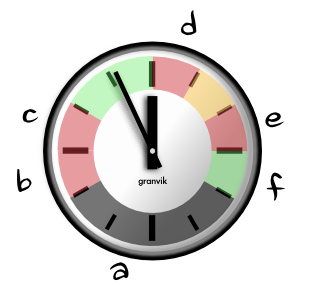For a brief moment imagine yourself a simple product with a list of ingredients and an “on sale” sticker. What would happen? Why might this be the smartest thinking you’ve done lately – both for you, your family and your career?
Figure: The nutrition list of a dad just happens to be close to a tin of baked beans. Who knew? Photographer: Bix Granvik, 8 years.
This blog is not about love, feelings or human value. It is just a mind experiment to see what would happen if you thought about yourself as a product. So with an open mind, let’s look at the closest sales plan that you might need to create.
Selling the Daddy (or Mother) product
It’s been a long hard day at work. Most things went wrong. You got stuck in Mails & Meetings and nothing seemed to be going forward. Your colleagues let out their pent-up frustration straight into your lap. Thank you very much!
After an hour’s horrific commute you stand outside your front door. The family is in there and you got a choice – which product do you want to sell? Let’s do an A/B test.
A) The “this is I how feel” daddy
You step in and the shoes are in a mess in the hallway. You frown even more.
– Come and put the shoes in order! you yell into the kitchen.
Without being asked, you volunteer the day’s pile of fertilizer and don’t really pay any attention to your wife’s reply. Instead you pick up the mail rubble, unpack your computer for some late evening work and go to the bathroom for …well, some kind of “rest”.
Now ask yourself, how many days can you sell this Daddy product to your family?
B) The “this is how I want to feel” daddy
You take a deep breath and step in with a minor smile. Not because it is a correct reflection of your day, on the contrary. The smile is a token, an effort, of the feelings for your family and the love you have for them. Remember?
You take a big step over the pile of shoes (ignoring them for now) and pick up your youngest child. Yup, he needs changing of diapers.
Here’s a test you can do as a parent: You cuddle your baby on the changing table while speaking in that familiar baby language:
– Daddy had a poo day, a blabloblup day. But yo don’t care do u, blubiblub? while tickling your child.
You put on your best weak smile. Yeah, it feels like a fake one, but science has shown that even when faking a good mood it will increase the happiness levels in your baby [1]. Here’s the odd thing: When you cuddle and lovingly prod your child, he/she will start to chuckle. I bet you can not stand more than a couple of minutes of that bubbling laughter. Every time I did I this I would step out of the bathroom feeling a lot better – ready to really meet my family.
How many times to do you think you can sell this product to your family? To yourself?
What happened?
In some sense we are the “reflections” of both our own actions and that of the people surrounding us. The most effective tool you have for changing your environment, like your family or work …is you.
When you tickled and spent time with your baby, you induced happiness into yourself. The bad day at the office didn’t go away, but you made the chances for a decent evening a lot better. And you need that to balance the Bad Stuff(tm) from the day.
Thinking of yourself as a tinned version of a dad, ready to ship, is not the truth. But it does help to realize that changing your actions will revert back to you via your loved ones. So it becomes more a question on how you take yourself to the next level. The next version of You Inc. You will enjoy You better.
The slow-mo insight
Guess what, this is not just mind experiment for home use and it doesn’t just have to do with being a dad or mum. Ask anyone younger than 30 how many “30 hour weeks” they do per year. Many of them work by the hour and that means total stand-by and constantly searching for jobs, i.e. being your own corporation. They might not use words like “sales plan”, but cold calling to find a few hours work is just that. [2]
So when you stand there in front of the door to your work: What kind of day do you want to have? What do you want to “sell”?
While experimenting with You Inc, please also remember that you are a true human being with lots and lots of potential and not just a product. Have fun!
/Björn
[1] Yeah right, like I would remember this reference. You just have to trust me, I read it somewhere. 🙂
[2] This effect is creeping up the ages and into the white-collar section of the work force. You have been warned. Check your own “productability” before you are forced to by someone or something else.






